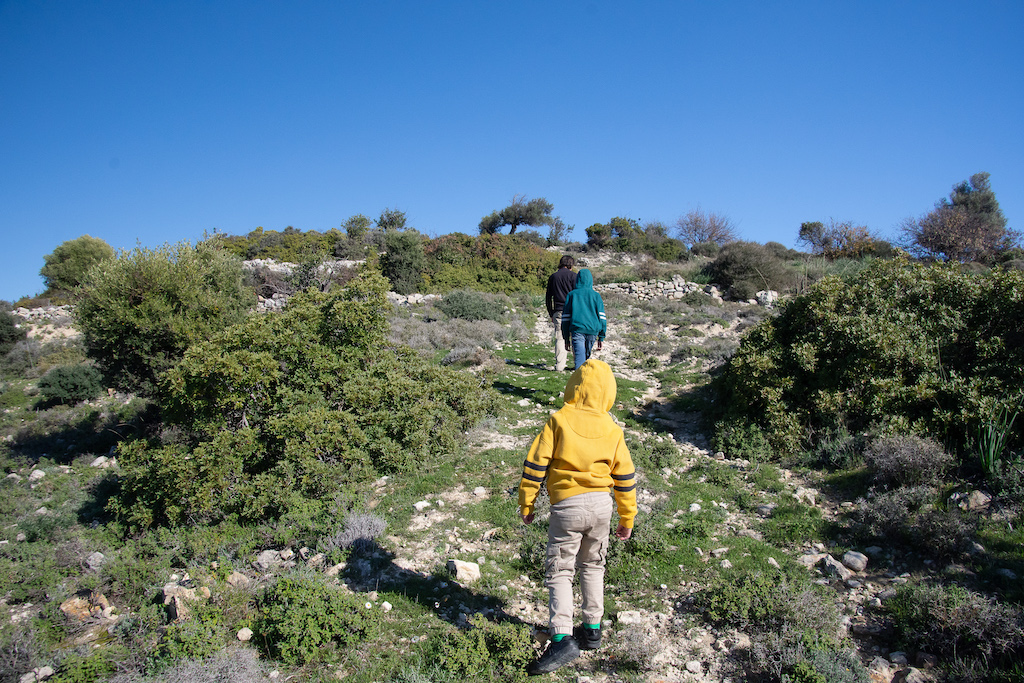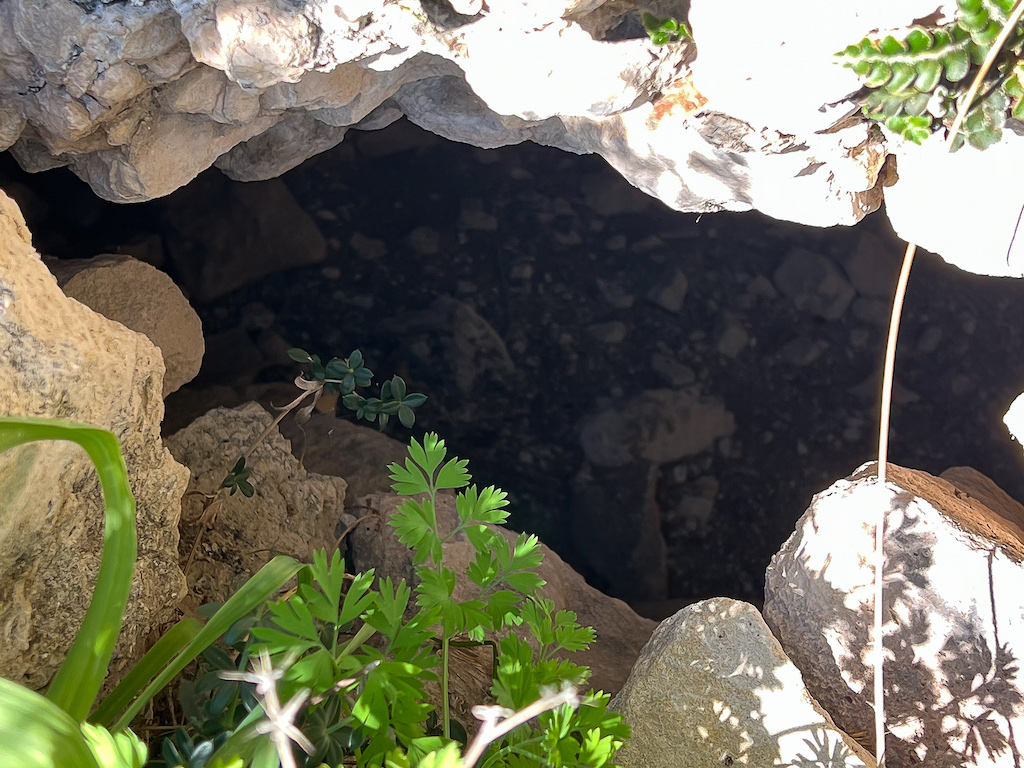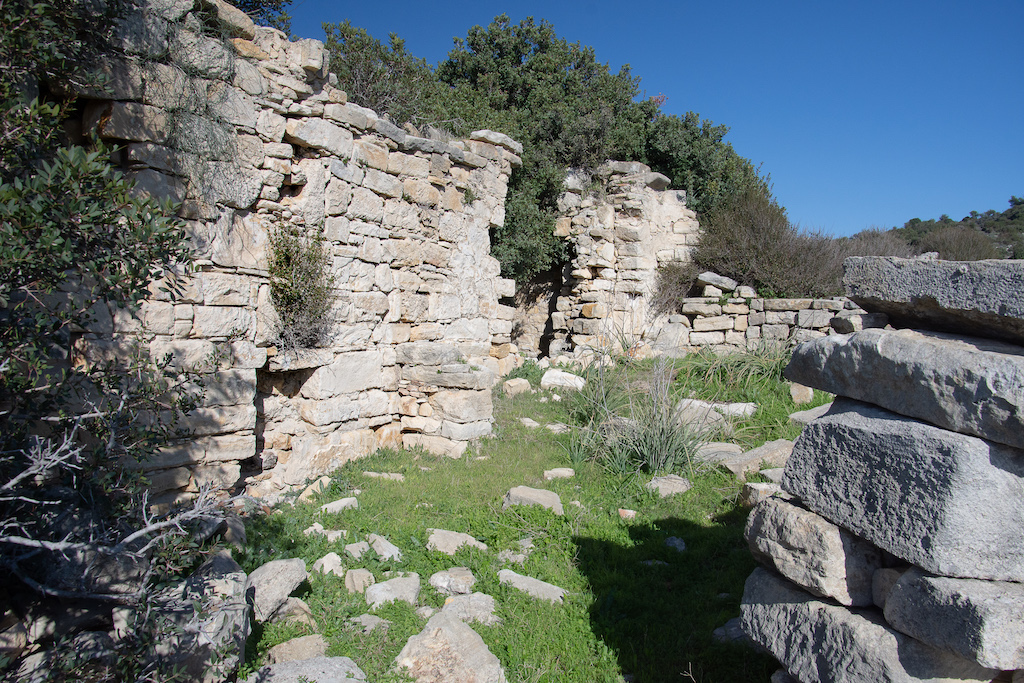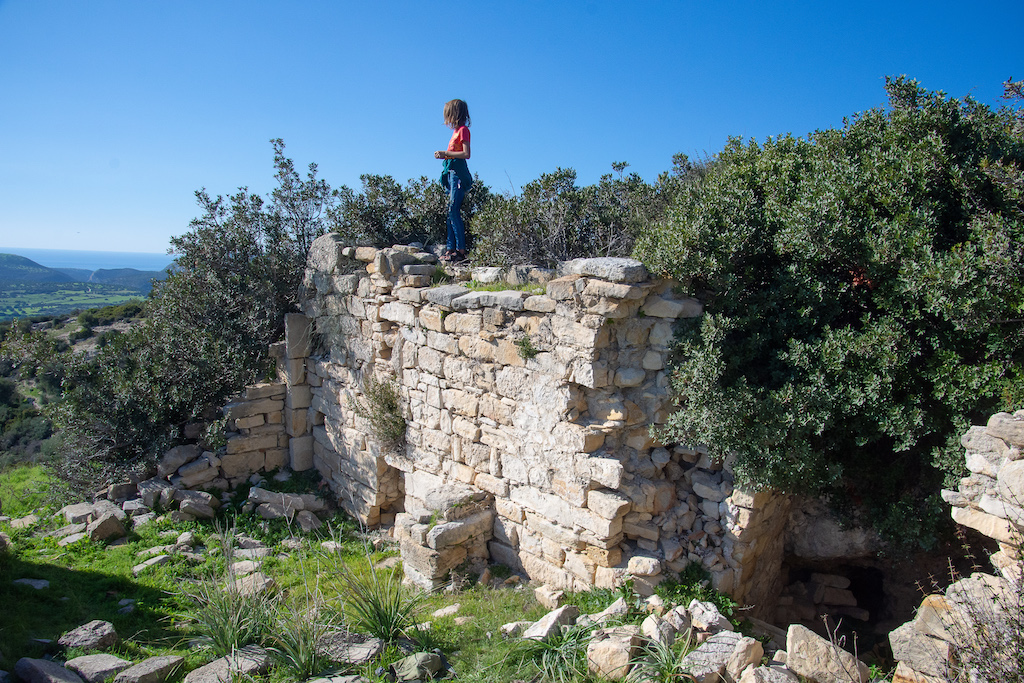

Yes, it sounds like the blurb of a book. But the story of St Kassianos of Glyfia captured my imagination years ago when I stumbled across it online.
St Kassianos lived as a hermit in a cave a few kilometres from Alektora, a village north of Pissouri in the Limassol district. The cave was on a hill in a beautiful isolated area called Glyfia. When the saint died it became his tomb and a church was built around it to honour him. His feast day was on September 16 but he is no longer celebrated. Forgotten.

I’d seen an old photo of someone standing in the ruins of the church – but was it still there? And would we be able to find it?
The scant information I’d found online put Glyfia at the village boundaries of Archimandrita, Plataniskia and Alektora. I scanned satellite images, drove around the area, looking for a hill with a ruin on it.
There were countless hills.
And after a while, I too forgot about St Kassianos of Glyfia.

It’s six years later and we are in the middle of blissful Christmas holiday slobbery. My children went to bed in pyjamas they hadn’t taken off for three days, after eating a dinner of jelly and ice cream. I vowed that tomorrow we’d get out for some fresh air and exercise. But nowhere too far – there were board games to play and Christmas movies to watch.
And that’s when I remembered St Kassianos of Glyfia.
In the intervening years since my last search, I found new information online. There was a new interactive website that had digitised Kitchener’s Map of Cyprus. Lord Kitchener’s 1882 map of Cyprus has helped me out a couple of times as it shows ruins that don’t always appear on modern maps. The new website allows you to view the map more easily and overlay it with modern-day maps for comparison.
And there, just above Alektora was the prominent label ‘Ayios Kasianos.’

Using the map and new co-ordinates found online, I eventually located the correct hill. It even had ruins on it! There was a clear track leading from Alektora, through farmland to the hill.

Next morning we hopped in the car and set off. The roads are good around Alektora and we were there in no time. We drove north through the village and out onto the farm tracks. It’s been a dry winter and the tracks were rutted but dry and drivable. If you drive a car that’s low to the ground, you might struggle. And in the rainy season it could get too muddy. But it’s walkable – a 6km round trip.

The track took us north through farmland for a couple of kilometres and then turned east across more hilly terrain. Hill after hill after hill. It was beautiful. And without co-ordinates there’s no way I would have just stumbled across the St Kassianos cave church.
When we reached the right hill, I gazed up at it, trying to spot the ruins. Nothing. Another track snaked up and around it, so we parked and continued on foot to the other side.

The south side of the hill opened out onto spectacular views across Alektora and the surrounding countryside. The Mediterranean glinted in the distance. But no sign of any ruins. Where was it?

Something metallic above us caught the sun. I studied it through the zoom lens of my camera. Was it a fence post or could it be the top of a cross?

We climbed the hill, stepping over a few brave anemones and violets. This place will be stunning in the spring when the flowers are in full bloom. Terracotta pot fragments were scattered across the ground at our feet.

I lost sight of the metallic thing but at the top of the hill was the ruin I’d seen on satellite images. It was rectangular with two rooms. My heart dropped. This wasn’t a church. Where was Ayios Kassianos?

And then I caught sight of the metallic thing again, a bit further down the south side of the hill. I climbed over rocks and around bushes into an open area surrounded by shrubs and trees. At one end was a large cross next to what could have been a font. A fallen-down single-wire fence surrounded it.

I looked around at the shrubs and rocks. Was I standing in the church? Was this all that was left? And where was the cave?
We explored the area and dropped to a lower level. There beneath a thick covering of vegetation was the low, wide entrance to a cave. The thorny shrubs made it completely inaccessible but I could see it stretched back some way. Was this where St Kassianos lived?

But it just didn’t feel right. Although it was big, it was too low for anyone to live in. We continued on round the hill, towards the eastern side.
And there in front of me rose the walls of an ancient church. It was close to the other ruin but completely hidden from sight by thick bushes on its northern and western sides. No wonder it had been forgotten!


I stepped through the entrance and into a roofless room. What’s left of the church is in a sorry state. Its entire eastern wall has collapsed. But there are still signs of its original features; alcoves and plinths could be seen in the walls.

At the north-western end of the room was a large gap in the wall. I’d assumed the wall had collapsed – but that wasn’t it. The gap led down to a small cave. There were alcoves either side, the remnants of incense burners on the floor. The walls were blackened with candle smoke.
This was the cave of St Kassianos of Glyfia.


The cave was small but interesting. To the left was the small pit that was thought to have been the sarcophagus that had contained St Kassianos’s remains.

There was a partially-buried alcove just left of the cave entrance. It was clear that the floor of the cave and the church had once been much lower, filled in over the years by earth and rubble.

The tiny alcove to the right of the entrance was more exposed and I got on my hands and knees to have a look inside.

Across its domed roof and on the back wall were frescoes. Totally hidden from the outside. There was writing and the possible outline of a halo around a head.


Frescoes often depict the life and miracles of a saint. But why decorate such a tiny alcove? Unless it hadn’t been an alcove at all. Could it be an archway of a larger, deeper structure? It reminded me of the sunken church we’d found on the Karpaz peninsula.

I climbed out of the cave and studied the walls of the church. Protruding from the ground in the eastern wall was what looked like a small arch, possibly once a tiny window. Was this a sign that the floor had once been much lower?

We explored the area surrounding the church and saw depressions in the ground. What was under there? More of the buried church? Kitchener’s map flags up a nearby ‘Laona’ or spring. Apparently a stone canal still exists that was built to supply water from the well to the saint’s cave. Could that be what was just beneath the ground?

So many questions. So much forgotten history. But it was wonderful to finally find St Kassianos’s cave church.
We spent some time enjoying the fabulous location. It’s perfect for rambling and bird-spotting, or to stop for a picnic and flask of tea.
And while I chilled out next to this forgotten ruin, I found myself wondering what else is hiding out there, waiting to be found. It’s an enticing thought.

Leave a Reply